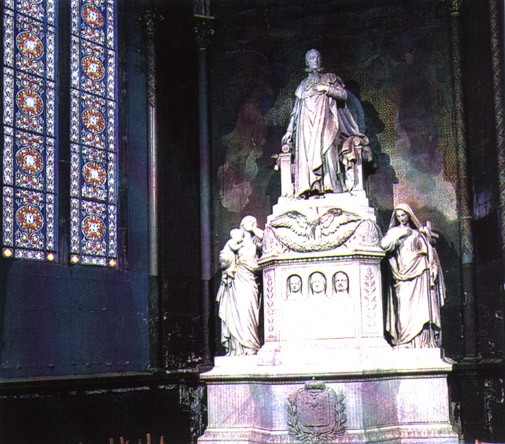Louis Bonaparte, future king of Holland, selected the small village of St-Leu in the Oise valley as the place to live with his young bride, Hortense de Beauharnais. With the generous gift of 600 000 francs from his famous brother, Napoleon, Louis bought the two chateaux of St-Leu. Louis then proceeded to demolish the old château, and the young couple moved into in the “lower château” set in the centre of an enchanting park remodelled by Berthault, the landscape gardener of Malmaison and Compiègne.
On mounting the throne in 1806 Louis came very rarely to St-Leu. Hortense, on the other hand, was often there over the period 1804 – 1815. On the couple's separation in 1810 Hortense became sole owner of the estate, and with the first Restoration the estate was elevated to a Duchy on the 20th May 1814. On the second Restoration beginning in 1815, Hortense (now the Duchess of St-Leu) was obliged to flee to Switzerland to Arenenberg where she died in 1837. After Queen Hortense had been driven out, Louis XVIII returned the estate to the Duc de Bourbon, prince de Condé, whose “suicide” in 1830 took place under strange circumstances.
As for Louis Bonaparte, however, following his abdication in 1810 he travelled Europe under the title of Count of St-Leu before finally settling in Italy. From here Louis assisted his eldest son, Louis-Napoléon future Napoleon III, in his various attempts to regain power, finally dying alone in Livorno on 25th July 1846. In accordance with his last wishes, his body brought back and laid to rest in the church in St-Leu next the tombs of his two other sons, Napoléon-Charles (d. 1807) and Napoléon-Louis (d. 1831). The body of Charles Bonaparte, the father of both Napoleon Ist and Louis, was also brought to St-Leu, although it was finally to be laid in the imperial chapel in Ajaccio in 1951.
Despite the fact that Louis and Hortense's estate has been entirely carved up and sold to different owners and nothing of it former glory remains, the church of St-Leu still houses the remains of the king of Holland and his sons. At the beginning of the Second Republic the building however was almost in ruins. Thus in 1849 the prince-president Louis-Napoléon decided to have it rebuilt so as to give the members of his family a vault worthy of the grandeur of their name. The project (funded entirely by his own money) was given to Eugène Lacroix who erected a monument modelled on the early Christian basilica. The church is designed on a rectangular plan which is divided into three bays. The nave, flanked by side aisles, terminates in a apse. On the whole the church of St-Leu St-Gilles is remarkable for its austere aspect, softened slightly by the enamelled ceramic tiles in the tympanums on the exterior and the wooden ceiling decorated with gold stars.
The first thing that a visitor notices on entering is the apse, with its imposing white marble monument in memory of Louis Bonaparte and his sons. Behind the memorial there is a fresco by Sébastien Cornu showing four angels bearing Saint Louis, Saint Napoleon and Saint Charles. This mural has recently been restored (a restoration financed by the Fondation Napoleon) as the commemorative plaque records. The stained glass windows in the apse present floral motifs superimposed with the Napoleonic “N”. The catafalques of the family are held in the crypt. Also of interest are the tombs in the chapel to the right of the choir commemorating the Baroness de Broc, one of Queen Hortense's matrons of honour, and Baroness Broc's sister, the wife of Maréchal Ney.
The church of St-Gilles in St-Leu was consecrated on 31st October, 1851 by Monseigneur Gros, Bishop of Versailles, in the presence of Louis-Napoleon Bonaparte accompanied by members of his family and other important figures. In 1869 the Emperor offered a magnificent Cavaillé-Coll organ, and this today is one of the church's finest ornaments. Napoleon III originally had plans to have vast murals painted inside, but the war of 1870 and the fall of the Second Empire interposed.
Church of St-Leu and St-Gilles


